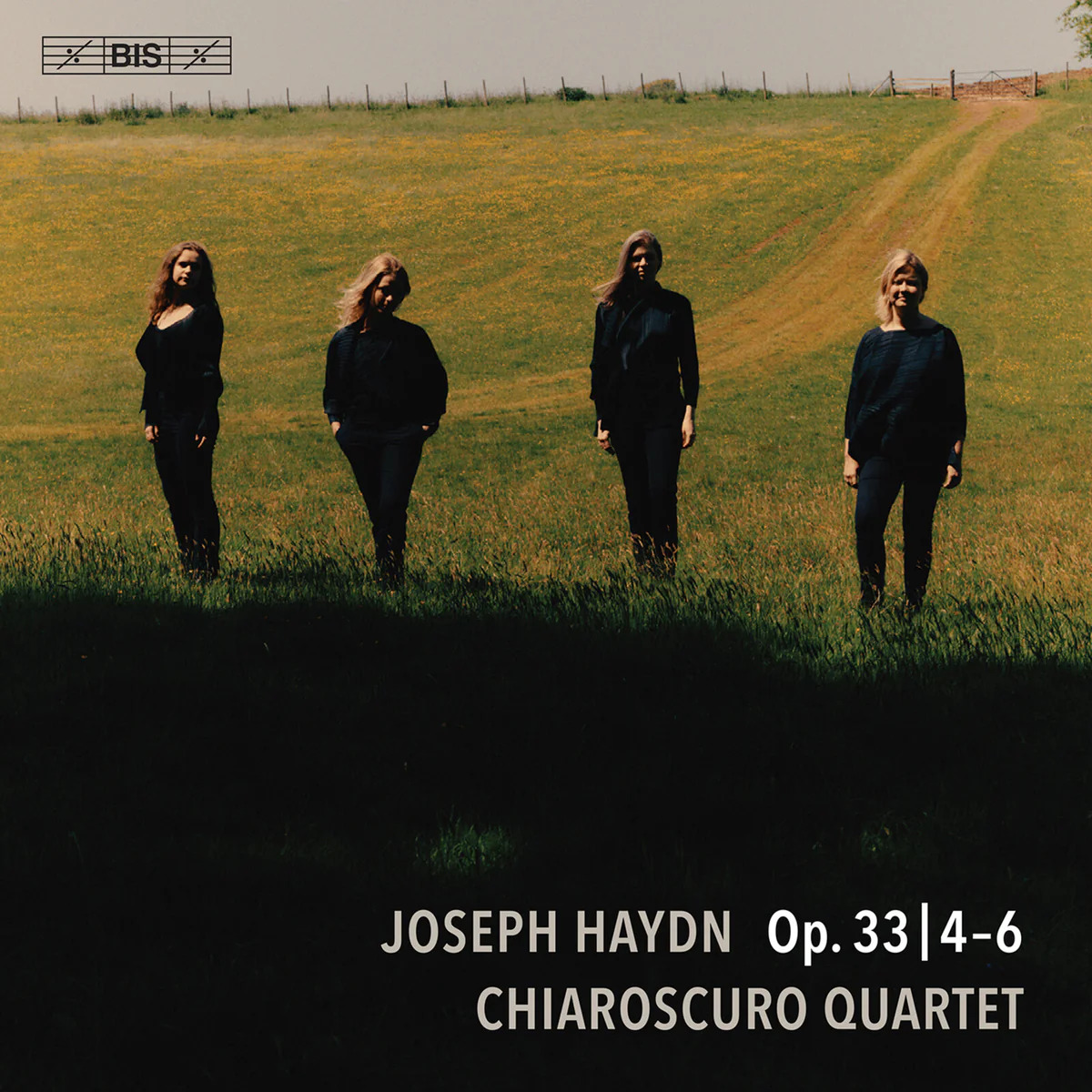Chiaroscuro Quartet
57:22
BIS-2608
This release marks the completion of Haydn’s opus 33 set of six string quartets by the Chiaroscuro Quartet, the first disc having been reviewed on this site. The quartet of course takes its name from the Baroque painting device in which a brightly-lit subject is strongly contrasted with a dark background. There is little dark background – or indeed darkness of any kind – in these quartets, which, apart from marking Haydn’s arrival as the first great composer in the mediu,m are particularly notable for their joyous nature and displays of fun and good humour. It is no surprise to find five of the quartets carrying the rare (for this period) marking ‘scherzo’, rather than ‘minuet’, and more than one observer has suggested that Haydn must have been particularly happy during this period of his life (the early 1780s) to have written such engagingly light-hearted music. It was however Haydn’s greatest biographer H C Robbins Landon who pertinently reminded us that this was also the period when Haydn was in the first flush of his love affair with the singer Luigia Polzelli; it is certainly not fanciful to see in these spirited and joyous pieces the work of a man in love.
Of the final three quartets, it is No 5 in G that is the most ambitious and striking. It is believed to be the earliest of the group to have been composed, but its opening Vivace assai is marked by a confidence and dramatic drive that suggest something far more mature. Although the material, like so much of that in op 33, has folk-like connotations, the development in particular has an animated dramatic drive, while the end of the movement finds Haydn experimenting with a full-blooded texture of the kind we associate more with the Beethoven string quartets. The following Largo e cantabile movement is perfectly paced, showing both here and in the Largo third movement of the Quartet no 4 that the Chiaroscuros well understand the 18th-century meaning of “Largo”, quite different to the much slower tempo implied by later use of the word. Equally impressive here is the beautiful shaping of the melodic line by leader Alina Ibragimova, the movement essentially being an operatic aria in which the singer has been replaced by the first violin. The succeeding Scherzo Allegro introduces one of Haydn’s many moments of sheer fun, the joke being that the music constantly sounds as if it is going somewhere significant but never does, always just petering out just as it finally seems to have got going. It hardly needs saying that The Chiaroscuros need no encouragement to make the most of it. The Finale is a set of variations on an irresistible siciliano theme, the variants giving the opportunity for all the members of the quartet to show off their considerable talents.
I’ve concentrated on the G-major Quartet particularly, but of course its delights are replicated in the other two quartets to some degree or another. Perhaps mention can be made of the whirlwind finale of No 4 in B-flat, one movement where it might be possible to raise an eyebrow about the very fast tempo (it is marked Presto) but the Quartet bring it off with such winning élan and make so much of the jokey ending – silences and the introduction of pizzicato – that any impending criticism is rapidly silenced.
Throughout these two reviews, it has been my intention to convey the fact that these are very distinguished performances indeed. The Chiaroscuro Quartet have had a change of personnel since recording the first three quartets, Charlotte Saluste-Bridoux taking over as second violin from Pablo Hernán Benedi and thus making the quartet now an all-woman group. To their balance and superb technique the change has not made one iota of audible difference. That’s to say the Chiaroscuros remain one of the most technically accomplished period instrument ensembles playing today.
Brian Robins
